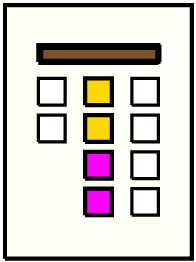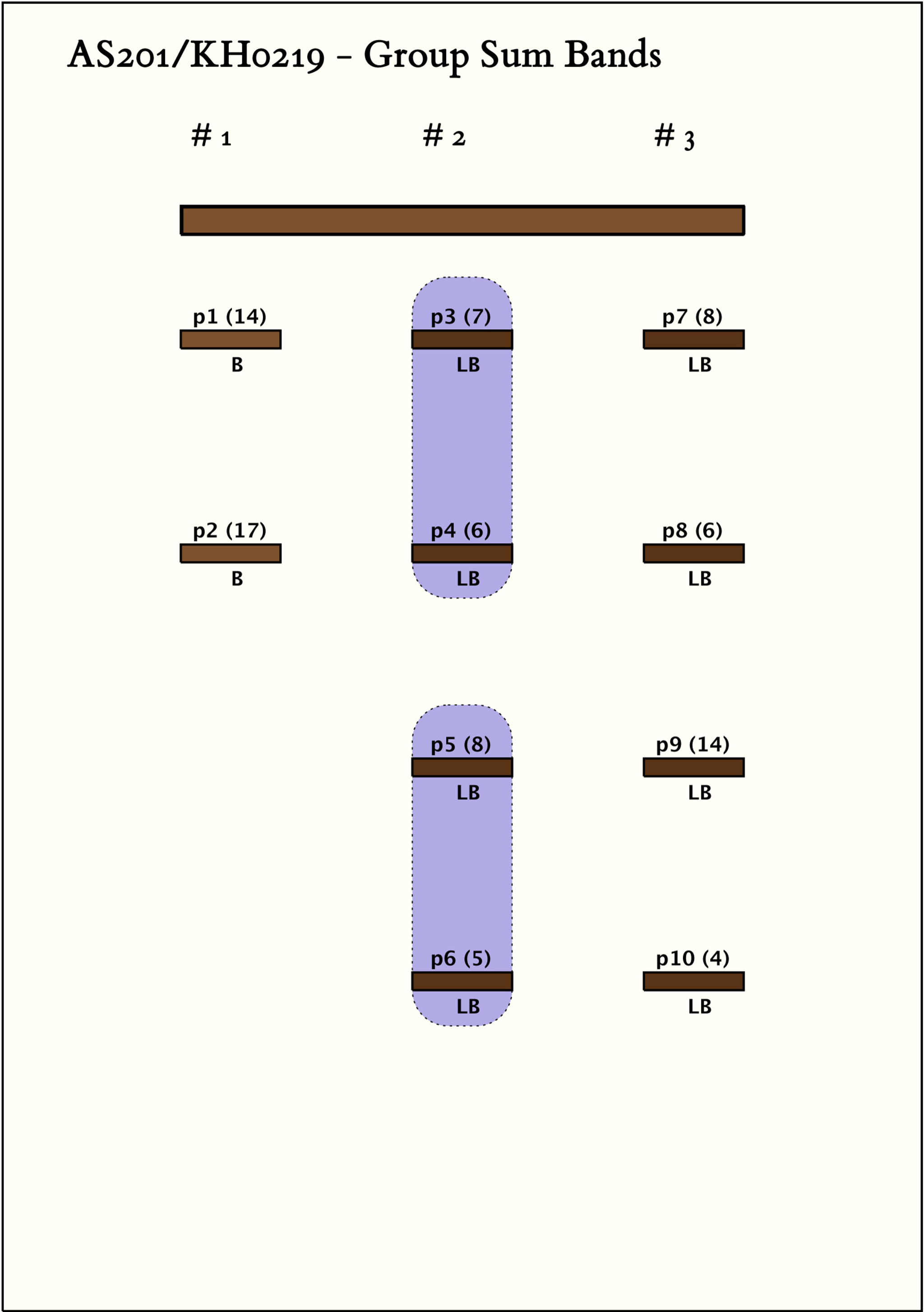AS201/KH0219 - Group Sum Bandss
Drawings:
Group Sum Bands:
Click on Image to View Larger
Individual Group Sum Bands: - Click on column name to sort
| # | Group Sum Bands Schema | Group Position 1 Based Index |
Split Index 1 Based Index |
Left Sum 1 Based Index |
Right Sum 1 Based Index |
|---|---|---|---|---|---|
| 0 |  | 001 | 3 | 13 = LB@[2, 1]:7 + EB:LB@[2, 1, 1]:20 | 13 = LB@[2, 2]:6 + EB@[2, 2, 1]:8 + LB@[2, 3]:8 + EB@[2, 3, 1]:7 + LB@[2, 4]:5 + LB@[2, 4, 1]:3 |
Khipu Notes:
Ascher Databook Notes:
- AS201,202, and 203 are designated by the same museum number. They are similar in color. Five colors are used; one is on all three of the khipus and another is on two of the three. All have groups consistent by color patterning. The values on them are the same order of magnitude. All values are 0 to 20. All group sums are below 40. (See AS202 observation 4 for other materials found with these khipus. )
- AS201, AS202, AS203, and AS204 are all designated by the museum as TK. This collection is discussed by D. Menzel in Pottery Style and Society in Ancient Peru, Berkeley and Los Angeles, University of California Press, 1976. Its provenance is Ica.
- By spacing, the khipu is separated into three groups of 2, 4, 4 pendants. Both pendants in the first group are color B. Each pendant in the next two groups is color LB with one subsidiary. The subsidiaries in the first of these two groups are LB, EB, or LB and EB mottled; in the second of these two groups they are all color B.
- The two groups of size four have the same rank order:
P3 > P1 > P2 > P4
One group and its subsidiaries sums to 64 and the other and its subsidiaries to 63. The subsidiaries on the second of these groups are all B and sum to 3 1. Similarly the first group of two pendants are B and sum to 31.
